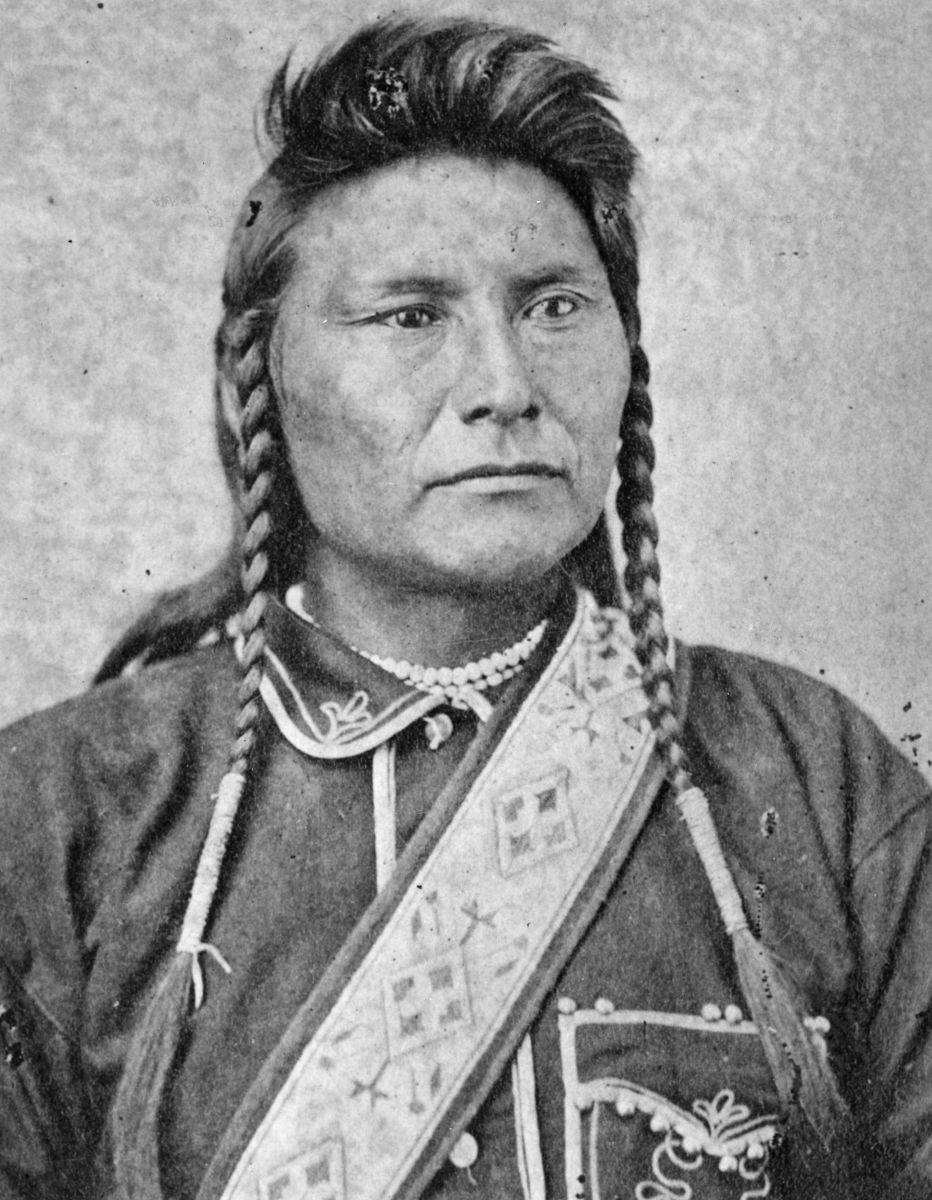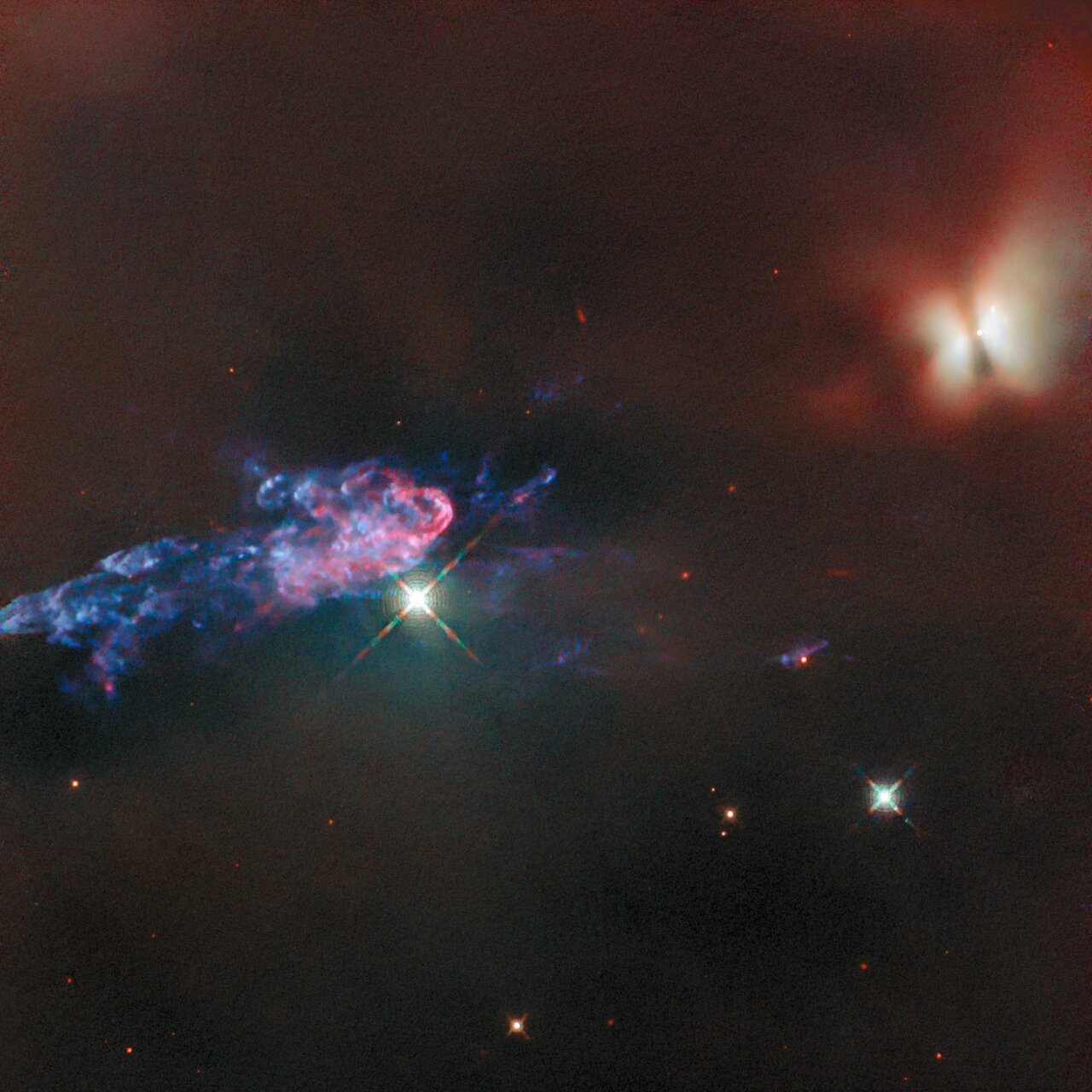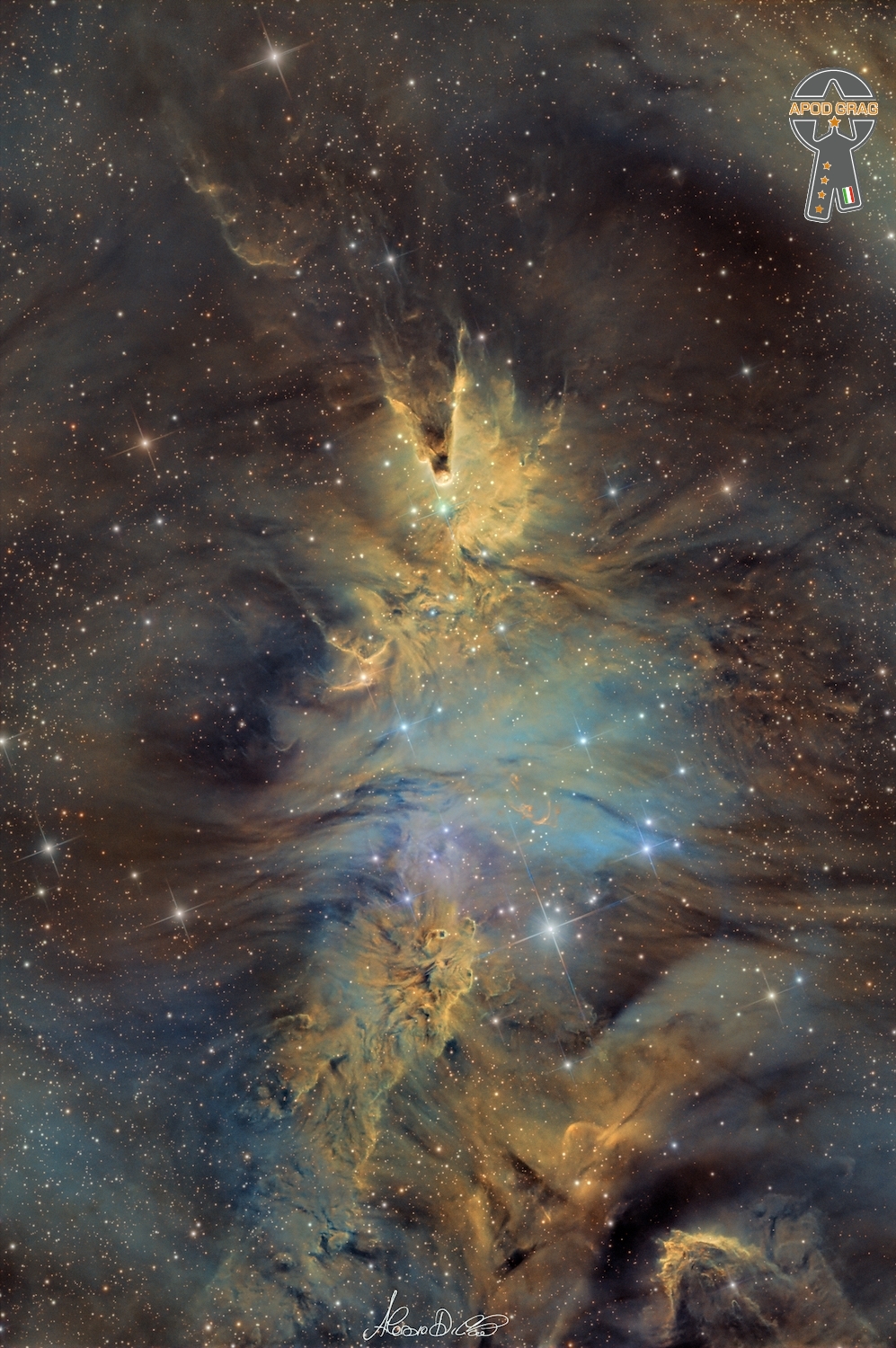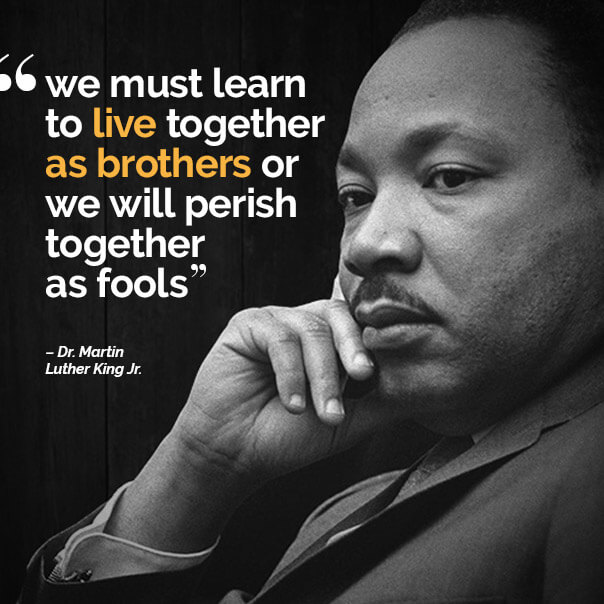Blog

Today’s NASA/ESA Hubble Space Telescope Picture of the Week peers into the dusty recesses of the nearest massive star-forming region to Earth, the Orion Nebula. Just 1300 light-years away, the Orion Nebula is visible to the naked eye below the three stars that form the ‘belt’ in the constellation Orion. The nebula is home to hundreds of newborn stars including the subject of this image: the protostars HOPS 150 and HOPS 153.
These protostars get their names from the Herschel Orion Protostar Survey, which was carried out with ESA’s Herschel Space Observatory. The object that can be seen in the upper-right corner of this image is HOPS 150: it’s a binary system, two young protostars orbiting each other. Each has a small, dusty disc of material surrounding it that it is feeding from. The dark line that cuts across the bright glow of these protostars is a cloud of gas and dust, over 2 000 times wider than the distance between Earth and the Sun, falling in on the pair of protostars. Based on the amount of infrared versus other wavelengths of light HOPS 150 is emitting, the protostars are mid-way down the path to becoming mature stars.
Extending across the left side of the image is a narrow, colourful outflow called a jet. This jet comes from the nearby protostar HOPS 153, out of frame. HOPS 153 is a significantly younger stellar object than its neighbour, still deeply embedded in its birth nebula and enshrouded by a cloud of cold, dense gas. While Hubble cannot penetrate this gas to see the protostar, the jet HOPS 153 has emitted is brightly visible as it plows into the surrounding gas and dust of the Orion Nebula.
The transition from tightly swaddled protostar to fully fledged star will dramatically affect HOPS 153’s surroundings. As gas falls onto the protostar, its jets spew material and energy into interstellar space, carving out bubbles and heating the gas. By stirring up and warming nearby gas, HOPS 153 may regulate the formation of new stars in its neighbourhood and even slow its own growth.
[Image Description: An area in the Orion nebula filled with dark, puffy clouds. On the left side a large area of clouds, crossed by a dark bar, is lit up in red and whitish colours by a protostar within. At the other side a large jet of material ejected by the protostar appears, made of thin, wispy, blue and pink clouds. A couple of foreground stars shine brightly in front of the nebula.]

Fred E. White (born Frederick Eugene Adams; January 13, 1955 – January 1, 2023) was an American musician and songwriter. He was one of the early members of Earth, Wind & Fire. He previously played drums on Donny Hathaway‘s Live album.
Earth, Wind & Fire consisting of Fred White along with half-brother Maurice White, brother Verdine White, and other members were inducted into the Rock & Roll Hall of Fame in 2000.
White died in Los Angeles on January 1, 2023, at age 67.
more...Shivkumar Sharma (13 January 1938 – 10 May 2022) was an Indian classical musician and santoor player who is credited with adapting the santoor for Indian classical music. As a music composer, he collaborated with Indian flautistHariprasad Chaurasia under the collaborative name Shiv–Hari and composed music for such hit Indian films as Faasle (1985), Chandni (1989), and Lamhe (1991).
Sharma was awarded the Sangeet Natak Akademi Award in 1986 and the Padma Shriand Padma Vibhushan (India’s fourth and second highest civilian awards) in 1991 and 2001.
more...Melba Doretta Liston (January 13, 1926 – April 23, 1999 KC, MO) was an American jazz trombonist, arranger, and composer. Other than those playing in all-female bands, she was the first woman trombonist to play in big bands during the 1940s and 1960s, but as her career progressed she became better known as an arranger, particularly in partnership with pianist Randy Weston. Other major artists with whom she worked include Dizzy Gillespie, Billie Holiday, John Coltrane, and Count Basie.
more...Joe Pass (born Joseph Anthony Jacobi Passalacqua; January 13, 1929 – May 23, 1994 New Brunswick, NJ) was an American jazz guitarist. Although Pass collaborated with pianist Oscar Peterson and vocalist Ella Fitzgerald, his status as one of the most notable jazz guitarists of the 20th century is generally attributed to his work on his solo albums, such as Virtuoso.
Pass’s released his studio debut Sounds of Synanon on July 1, 1962.
Pass recorded and released a series of albums during the 1960s under Pacific Jazz Records, including Catch Me, 12-String Guitar, For Django, and Simplicity. In 1963, he received DownBeatmagazine’s New Star Award. He also played on Pacific Jazz recordings by Gerald Wilson, Bud Shank, and Les McCann. Pass was a member of the George Shearing Quintet from 1965 through 1967.
Throughout the 1960s, Pass primarily did TV and recording session work in Los Angeles, including performing in television orchestras. Norman Granz, the producer of Jazz at the Philharmonic and the founder of Verve Records, signed Pass to Pablo Records in December 1973.
In December 1974, Pass released his solo album Virtuoso on Pablo. Also in 1974, Pablo released the album The Trio with Pass, Oscar Peterson, and Niels-Henning Ørsted Pedersen. He performed with them on many occasions throughout the 1970s and 1980s. At the Grammy Awards of 1975, The Trio won the Grammy Award for Best Jazz Performance by a Group. As part of the Pablo roster, Pass recorded with Benny Carter, Milt Jackson, Herb Ellis, Zoot Sims, Duke Ellington, Dizzy Gillespie, Ella Fitzgerald, and Count Basie.
Pass was diagnosed with liver cancer in 1992. Although he was initially responsive to treatment and continued to play into 1993, his health eventually declined, forcing him to cancel his tour with Pepe Romero, Paco Peña, and Leo Kottke. Pass performed for the final time on May 7, 1994, with fellow guitarist John Pisano at a nightclub in Los Angeles. Pisano told Guitar Player that after the performance Pass said “I can’t play anymore”, an exchange that Pisano described as “like a knife in my heart.” Pass died from liver cancer in Los Angeles 16 days later, at the age of 65.
more...
NGC 2264 is the designation number of the New General Catalogue that identifies two astronomical objects as a single object: the Cone Nebula, and the Christmas Tree Cluster. Two other objects are within this designation but not officially included, the Snowflake Cluster, and the Fox Fur Nebula. All of the objects are located in the Monoceros constellation and are located about 720 parsecs or 2,300 light-years from Earth. Due to its relative proximity and large size, it is extremely well-studied. NGC 2264 is sometimes referred to as the Christmas Tree Cluster and the Cone Nebula. However, the designation of NGC 2264 in the New General Catalogue refers to both objects and not the cluster alone.

Ronald Shannon Jackson (January 12, 1940 – October 19, 2013) was an American jazz drummer from Fort Worth, Texas. A pioneer of avant-garde jazz, free funk, and jazz fusion, he appeared on over 50 albums as a bandleader, sideman, arranger, and producer. Jackson and bassist Sirone are the only musicians to have performed and recorded with the three prime shapers of free jazz: pianist Cecil Taylor, and saxophonists Ornette Coleman and Albert Ayler.
Musician, Player and Listener magazine writers David Breskin and Rafi Zabor called him “the most stately free-jazz drummer in the history of the idiom, a regal and thundering presence.”[3] Gary Giddins wrote “Jackson is an astounding drummer, as everyone agrees…he has emerged as a kind of all-purpose new-music connoisseur who brings a profound and unshakably individual approach to every playing situation.”
In 1979, he founded his own group, the Decoding Society, playing what has been dubbed free funk: a blend of funk rhythm and free jazz improvisation.
more...John William “Long John” Baldry (12 January 1941 – 21 July 2005) was an English musician and actor. In the 1960s, he was one of the first British vocalists to sing the blues in clubs and shared the stage with many British musicians including the Rolling Stones and the Beatles. Before achieving stardom, Rod Stewart and Elton John were members of bands led by Baldry. He enjoyed pop success in 1967 when “Let the Heartaches Begin” reached No. 1 in the UK, and in Australia where his duet with Kathi McDonald “You’ve Lost That Lovin’ Feelin’” reached No. 2 in 1980.
Baldry lived in Canada from the late 1970s until his death, in which he continued to make records there. In the mid 1980’s, he took up voiceover work. Two of his best-known voice roles were as Dr. Ivo Robotnik in Adventures of Sonic the Hedgehog, and as KOMPLEX in Bucky O’Hare and the Toad Wars.
more...José Arcadio Limón (January 12, 1908 – December 2, 1972) was a dancer and choreographer from Mexico and who developed what is now known as ‘Limón technique’. In the 1940s, he founded the
José Limón Dance Company (now the Limón Dance Company), and in 1968 he created the José Limón Foundation to carry on his work.
In his choreography, Limón spoke to the complexities of human life as experienced through the body. His dances feature large, visceral gestures — reaching, bending, pulling, grasping — to communicate emotion. Inspired in part by his teacher Doris Humphrey‘s and Charles Weidman‘s theories about the importance of body weight and dynamics, his own Limón technique emphasizes the rhythms of falling and recovering balance and the importance of good breathing to maintaining flow in a dance. He also utilized the dance vocabulary developed by both Doris Humphrey and Charles Weidman, which aimed at demonstrating emotion through dance in a way that was much less strict and stylized than ballet as well as used movements of the body that felt most natural and went along with gravity.
Limón’s most well-known work is The Moor’s Pavane (1949), based on Shakespeare’s Othello, which won a major award. Other works were inspired by subjects as diverse as the McCarthy hearings (The Traitor) and the life of La Malinche, who served as interpreter for Hernán Cortés. Limón generally sets his dances to music, choosing composers ranging from Ludwig van Beethoven and Frederic Chopin to Arnold Schoenberg and Heitor Villa-Lobos.
more...Fred McDowell (January 12, 1904 – July 3, 1972), known by his stage name Mississippi Fred McDowell, was an American singer-songwriter and guitarist of hill country blues music.
McDowell was born in Rossville, Tennessee. His parents were farmers, who both died while Fred was in his youth. He took up the guitar at the age of 14 and was soon playing for tips at dances around Rossville. Seeking a change from plowing fields, he moved to Memphis in 1926, where he worked in the Buck-Eye feed mill, which processed cotton into oil and other products. In 1928, he moved to Mississippi to pick cotton.He finally settled in Como, Mississippi, around 1940, where he worked as a full-time farmer for many years while continuing to play music on weekends at dances and picnics.
more...George M. Duke (January 12, 1946 – August 5, 2013 San Rafael, Ca) was an American keyboardist, composer, singer-songwriter and record producer. He worked with numerous artists as arranger, music director, writer and co-writer, record producer and as a professor of music. He first made a name for himself with the album The Jean-Luc Ponty Experience with the George Duke Trio. He was known primarily for 32 solo albums, of which A Brazilian Love Affair from 1979 was his most popular, as well as for his collaborations with other musicians, particularly Frank Zappa.
more...James Columbus “Jay” McShann (January 12, 1916 – December 7, 2006 Muskogee,OK) was an American jazz pianist, vocalist, composer, and bandleader. He led bands in Kansas City, Missouri, that included Charlie Parker, Bernard Anderson, Walter Brown, and Ben Webster.
McShann moved to Kansas City, Missouri, in 1936, and set up his own big band which variously featured Charlie Parker (1937–42), Al Hibbler, Ben Webster, Paul Quinichette, Bernard Anderson, Gene Ramey, Jimmy Coe, Gus Johnson (1938–43), Harold “Doc” West, Earl Coleman, Walter Brown, and Jimmy Witherspoon, among others. His first recordings were all with Charlie Parker, the first as the Jay McShann Orchestra on August 9, 1940.
The band played both swing and blues numbers, but played blues on most of its records; its most popular recording was “Confessin’ the Blues” with Walter Brown on vocals. The group disbanded when McShann was drafted into the Army in 1944. After his return two years later, he found that small groups were now taking the place of big-bands in the jazz scene.
more...NASA’s James Webb Space Telescope’s NIRCam (Near-Infrared Camera) image of the galaxy cluster PLCK G165.7+67.0, also known as G165. A foreground cluster, located 3.6 billion light-years away from Earth, is magnifying and bending the light of the distant universe beyond. In this image, astronomers discovered the light of an exploding star — more specifically, a Type Ia supernova — imaged three times, seen as points of light within the prominent red arc at the right-center of the image.
To achieve three images, the light traveled along three different paths. Since each path had a different length, and light traveled at the same speed, the supernova was imaged in this Webb observation at three different times during its explosion. The multiply-imaged supernova offers astronomers a unique way to calculate a new value for the Hubble constant — the rate at which the universe is accelerating.
The field of G165 is known for a high rate of star formation of more than 300 solar masses per year, an attribute that correlates with higher supernova rates.

more...
Laurens Hammond (January 11, 1895 – July 1, 1973 Evanston, IL) was an American engineer and inventor. His inventions include the Hammond organ, the Hammond clock, and the world’s first polyphonic musical synthesizer, the Novachord.
more...More Posts
- Joan Baez
- Bucky Pizzarelli
- Kenny Clarke
- World Music with Vusi Mahlasela
- Daily Roots with Junior Marvin
- Surviving the Pandemic and Realizing Racial Justice
- The Cosmos with NGC 1365
- Dave Weckl
- David Bowie
- Bill Graham
- Kelucharan Mohapatra
- Elvis Presley
- Tampa Red
- Flamenco Fridays with Tomatito
- Daily Roots with Fitzroy Drummond and Earl Lindo
- Daily Roots with Earl Lindo
- Surviving the Pandemic and Realizing Racial Justice
- The Cosmos with a Total Solar Eclipse 2020
- Earl Lindo
- Kenny Loggins
